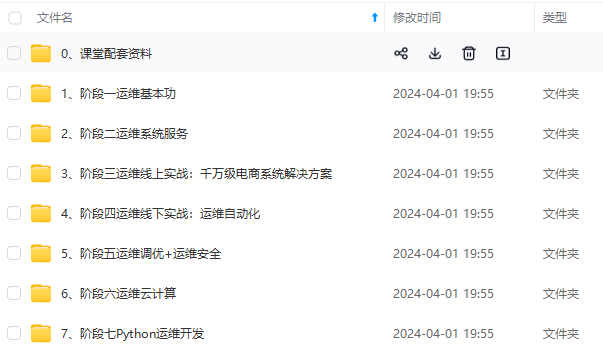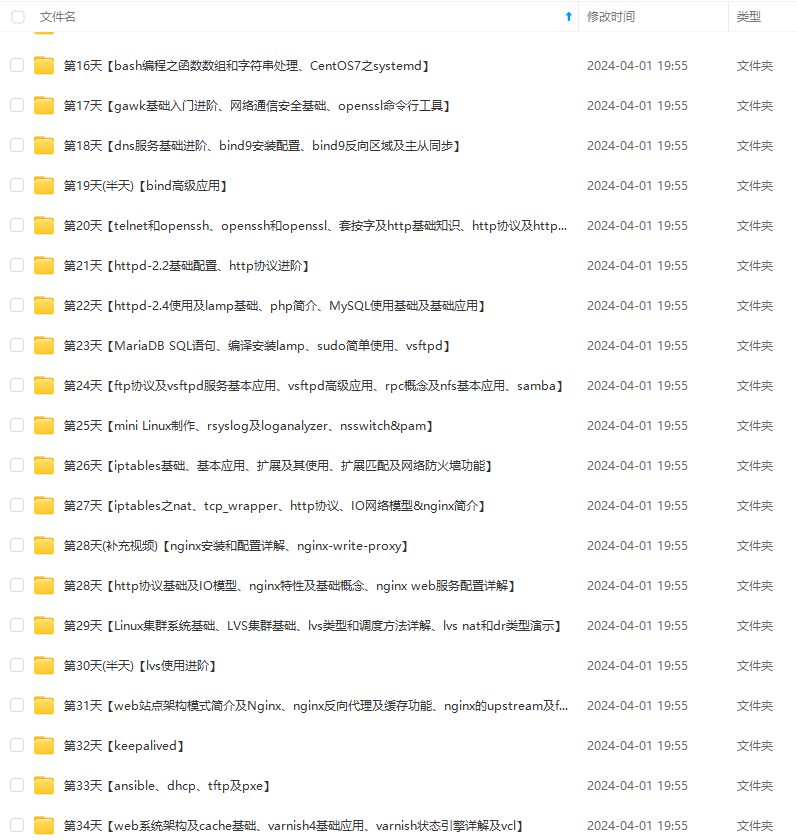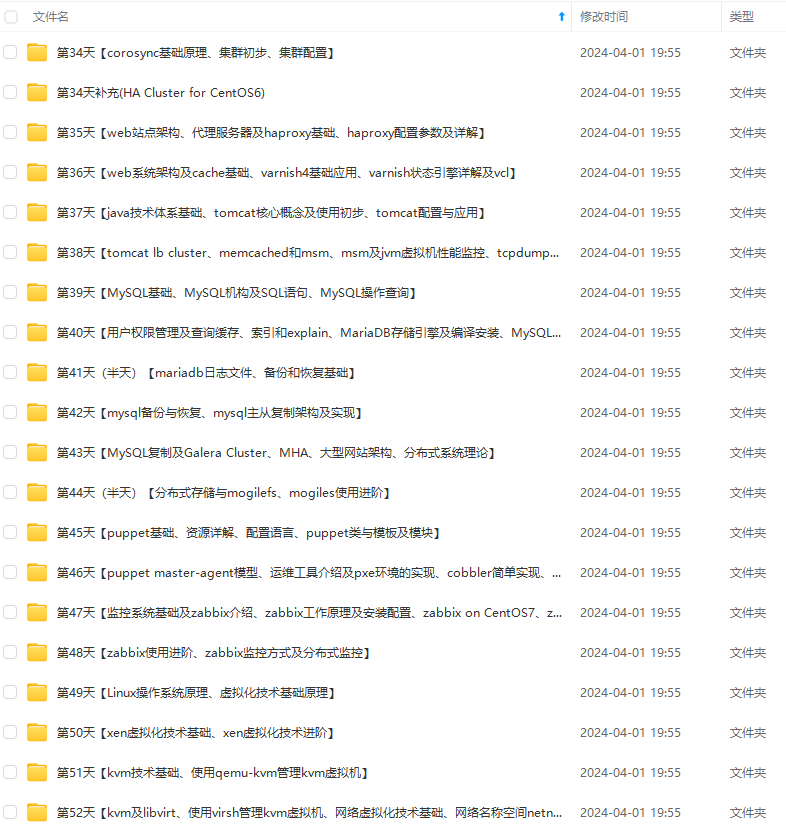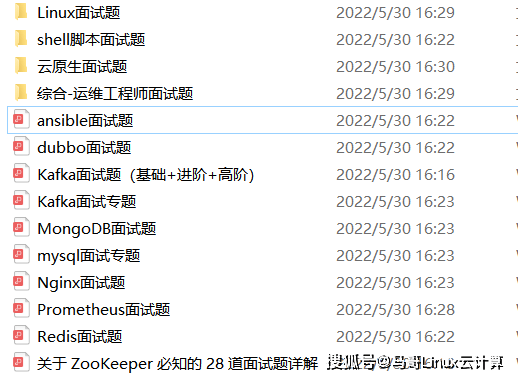cp source.txt result.txt # 这也是注释
3.2 回声(echoing)
正常情况下,make会打印每条命令,然后再执行,这就叫做回声(echoing)。
test:
<span class="token comment" style="margin: 0px; padding: 0px; list-style-type: none; border: none; color: rgb(112, 128, 144);"># 这是测试
执行上面的规则,会得到下面的结果。
$ make test
# 这是测试
在命令的前面加上@,就可以关闭回声。
test:
@<span class="token comment" style="margin: 0px; padding: 0px; list-style-type: none; border: none; color: rgb(112, 128, 144);"># 这是测试
现在再执行make test,就不会有任何输出。
由于在构建过程中,需要了解当前在执行哪条命令,所以通常只在注释和纯显示的echo命令前面加上@。
test:
@<span class="token comment" style="margin: 0px; padding: 0px; list-style-type: none; border: none; color: rgb(112, 128, 144);"># 这是测试
@echo TODO
3.3 通配符
通配符(wildcard)用来指定一组符合条件的文件名。Makefile 的通配符与 Bash 一致,主要有星号(*)、问号(?)和 […] 。比如, *.o 表示所有后缀名为o的文件。
clean:
rm <span class="token operator" style="margin: 0px; padding: 0px; list-style-type: none; border: none; color: rgb(166, 127, 89);">-</span>f <span class="token operator" style="margin: 0px; padding: 0px; list-style-type: none; border: none; color: rgb(166, 127, 89);">\*</span><span class="token punctuation" style="margin: 0px; padding: 0px; list-style-type: none; border: none; color: rgb(153, 153, 153);">.</span>o
3.4 模式匹配
Make命令允许对文件名,进行类似正则运算的匹配,主要用到的匹配符是%。比如,假定当前目录下有 f1.c 和 f2.c 两个源码文件,需要将它们编译为对应的对象文件。
%.o: %.c
等同于下面的写法。
f1.o: f1.c
f2.o: f2.c
使用匹配符%,可以将大量同类型的文件,只用一条规则就完成构建。
3.5 变量和赋值符
Makefile 允许使用等号自定义变量。
txt = Hello World
test:
@<span class="token keyword" style="margin: 0px; padding: 0px; list-style-type: none; border: none; color: rgb(0, 119, 170);">echo</span> $<span class="token punctuation" style="margin: 0px; padding: 0px; list-style-type: none; border: none; color: rgb(153, 153, 153);">(</span>txt<span class="token punctuation" style="margin: 0px; padding: 0px; list-style-type: none; border: none; color: rgb(153, 153, 153);">)</span>
上面代码中,变量 txt 等于 Hello World。调用时,变量需要放在 $( ) 之中。
调用Shell变量,需要在美元符号前,再加一个美元符号,这是因为Make命令会对美元符号转义。
test:
@<span class="token keyword" style="margin: 0px; padding: 0px; list-style-type: none; border: none; color: rgb(0, 119, 170);">echo</span> $<span class="token property" style="margin: 0px; padding: 0px; list-style-type: none; border: none; color: rgb(153, 0, 85);">$HOME</span>
有时,变量的值可能指向另一个变量。
v1 = $(v2)
上面代码中,变量 v1 的值是另一个变量 v2。这时会产生一个问题,v1 的值到底在定义时扩展(静态扩展),还是在运行时扩展(动态扩展)?如果 v2 的值是动态的,这两种扩展方式的结果可能会差异很大。
为了解决类似问题,Makefile一共提供了四个赋值运算符 (=、:=、?=、+=),它们的区别请看StackOverflow。
VARIABLE = value
# 在执行时扩展,允许递归扩展。
VARIABLE := value
# 在定义时扩展。
VARIABLE ?= value
# 只有在该变量为空时才设置值。
VARIABLE += value
# 将值追加到变量的尾端。
3.6 内置变量(Implicit Variables)
Make命令提供一系列内置变量,比如, ( C C ) 指向当前使用的编译器, (CC) 指向当前使用的编译器, (CC)指向当前使用的编译器,(MAKE) 指向当前使用的Make工具。这主要是为了跨平台的兼容性,详细的内置变量清单见手册。
output:
$<span class="token punctuation" style="margin: 0px; padding: 0px; list-style-type: none; border: none; color: rgb(153, 153, 153);">(</span>CC<span class="token punctuation" style="margin: 0px; padding: 0px; list-style-type: none; border: none; color: rgb(153, 153, 153);">)</span> <span class="token operator" style="margin: 0px; padding: 0px; list-style-type: none; border: none; color: rgb(166, 127, 89);">-</span>o output input<span class="token punctuation" style="margin: 0px; padding: 0px; list-style-type: none; border: none; color: rgb(153, 153, 153);">.</span>c
3.7 自动变量(Automatic Variables)
Make命令还提供一些自动变量,它们的值与当前规则有关。主要有以下几个。
(1)$@
$@指代当前目标,就是Make命令当前构建的那个目标。比如,make foo的 $@ 就指代foo。
a.txt b.txt:
touch <span class="token property" style="margin: 0px; padding: 0px; list-style-type: none; border: none; color: rgb(153, 0, 85);">$@</span>
等同于下面的写法。
a.txt:
touch a<span class="token punctuation" style="margin: 0px; padding: 0px; list-style-type: none; border: none; color: rgb(153, 153, 153);">.</span>txt
b.txt:
touch b<span class="token punctuation" style="margin: 0px; padding: 0px; list-style-type: none; border: none; color: rgb(153, 153, 153);">.</span>txt
(2)$<
< 指代第一个前置条件。比如,规则为 t : p 1 p 2 ,那么 < 指代第一个前置条件。比如,规则为 t: p1 p2,那么 <指代第一个前置条件。比如,规则为t:p1p2,那么< 就指代p1。
a.txt: b.txt c.txt
cp $<span class="token operator" style="margin: 0px; padding: 0px; list-style-type: none; border: none; color: rgb(166, 127, 89);"><</span> <span class="token property" style="margin: 0px; padding: 0px; list-style-type: none; border: none; color: rgb(153, 0, 85);">$@</span>
等同于下面的写法。
a.txt: b.txt c.txt
cp b<span class="token punctuation" style="margin: 0px; padding: 0px; list-style-type: none; border: none; color: rgb(153, 153, 153);">.</span>txt a<span class="token punctuation" style="margin: 0px; padding: 0px; list-style-type: none; border: none; color: rgb(153, 153, 153);">.</span>txt
(3)$?
? 指代比目标更新的所有前置条件,之间以空格分隔。比如,规则为 t : p 1 p 2 ,其中 p 2 的时间戳比 t 新, ? 指代比目标更新的所有前置条件,之间以空格分隔。比如,规则为 t: p1 p2,其中 p2 的时间戳比 t 新, ?指代比目标更新的所有前置条件,之间以空格分隔。比如,规则为t:p1p2,其中p2的时间戳比t新,?就指代p2。
(4)$^
$^ 指代所有前置条件,之间以空格分隔。比如,规则为 t: p1 p2,那么 $^ 就指代 p1 p2 。
(5)$*
KaTeX parse error: Undefined control sequence: \* at position 1: \̲*̲ 指代匹配符 % 匹配的部分,…* 就表示 f1。
(6)$(@D) 和 $(@F)
$(@D) 和 $(@F) 分别指向 @ 的目录名和文件名。比如, @ 的目录名和文件名。比如, @的目录名和文件名。比如,@是 src/input.c,那么 ( @ D ) 的值为 s r c , (@D) 的值为 src , (@D)的值为src,(@F) 的值为 input.c。
(7)$(<D) 和 $(<F)
$(<D) 和 $(<F) 分别指向 $< 的目录名和文件名。
所有的自动变量清单,请看手册。下面是自动变量的一个例子。
dest/%.txt: src/%.txt
@<span class="token punctuation" style="margin: 0px; padding: 0px; list-style-type: none; border: none; color: rgb(153, 153, 153);">\[</span> <span class="token operator" style="margin: 0px; padding: 0px; list-style-type: none; border: none; color: rgb(166, 127, 89);">-</span>d dest <span class="token punctuation" style="margin: 0px; padding: 0px; list-style-type: none; border: none; color: rgb(153, 153, 153);">\]</span> <span class="token operator" style="margin: 0px; padding: 0px; list-style-type: none; border: none; color: rgb(166, 127, 89);">||</span> mkdir dest
cp $<span class="token operator" style="margin: 0px; padding: 0px; list-style-type: none; border: none; color: rgb(166, 127, 89);"><</span> <span class="token property" style="margin: 0px; padding: 0px; list-style-type: none; border: none; color: rgb(153, 0, 85);">$@</span>
上面代码将 src 目录下的 txt 文件,拷贝到 dest 目录下。首先判断 dest 目录是否存在,如果不存在就新建,然后,$< 指代前置文件(src/%.txt), $@ 指代目标文件(dest/%.txt)。
3.8 判断和循环
Makefile使用 Bash 语法,完成判断和循环。
ifeq ($(CC),gcc)
libs=$(libs_for_gcc)
else
libs=$(normal_libs)
endif
上面代码判断当前编译器是否 gcc ,然后指定不同的库文件。
LIST = one two three
all:
<span class="token keyword" style="margin: 0px; padding: 0px; list-style-type: none; border: none; color: rgb(0, 119, 170);">for</span> i <span class="token keyword" style="margin: 0px; padding: 0px; list-style-type: none; border: none; color: rgb(0, 119, 170);">in</span> $<span class="token punctuation" style="margin: 0px; padding: 0px; list-style-type: none; border: none; color: rgb(153, 153, 153);">(</span>LIST<span class="token punctuation" style="margin: 0px; padding: 0px; list-style-type: none; border: none; color: rgb(153, 153, 153);">)</span><span class="token punctuation" style="margin: 0px; padding: 0px; list-style-type: none; border: none; color: rgb(153, 153, 153);">;</span> <span class="token keyword" style="margin: 0px; padding: 0px; list-style-type: none; border: none; color: rgb(0, 119, 170);">do</span> \\
<span class="token keyword" style="margin: 0px; padding: 0px; list-style-type: none; border: none; color: rgb(0, 119, 170);">echo</span> $<span class="token property" style="margin: 0px; padding: 0px; list-style-type: none; border: none; color: rgb(153, 0, 85);">$i</span><span class="token punctuation" style="margin: 0px; padding: 0px; list-style-type: none; border: none; color: rgb(153, 153, 153);">;</span> \\
<span class="token keyword" style="margin: 0px; padding: 0px; list-style-type: none; border: none; color: rgb(0, 119, 170);">done</span>
# 等同于
all:
<span class="token keyword" style="margin: 0px; padding: 0px; list-style-type: none; border: none; color: rgb(0, 119, 170);">for</span> i <span class="token keyword" style="margin: 0px; padding: 0px; list-style-type: none; border: none; color: rgb(0, 119, 170);">in</span> one two three<span class="token punctuation" style="margin: 0px; padding: 0px; list-style-type: none; border: none; color: rgb(153, 153, 153);">;</span> <span class="token keyword" style="margin: 0px; padding: 0px; list-style-type: none; border: none; color: rgb(0, 119, 170);">do</span> \\
<span class="token keyword" style="margin: 0px; padding: 0px; list-style-type: none; border: none; color: rgb(0, 119, 170);">echo</span> <span class="token property" style="margin: 0px; padding: 0px; list-style-type: none; border: none; color: rgb(153, 0, 85);">$i</span><span class="token punctuation" style="margin: 0px; padding: 0px; list-style-type: none; border: none; color: rgb(153, 153, 153);">;</span> \\
<span class="token keyword" style="margin: 0px; padding: 0px; list-style-type: none; border: none; color: rgb(0, 119, 170);">done</span>
上面代码的运行结果。
one
two
three
3.9 函数
Makefile 还可以使用函数,格式如下。
$(function arguments)
# 或者
${function arguments}
Makefile提供了许多内置函数,可供调用。下面是几个常用的内置函数。
(1)shell 函数
shell 函数用来执行 shell 命令
srcfiles := $(shell echo src/{00..99}.txt)
(2)wildcard 函数
wildcard 函数用来在 Makefile 中,替换 Bash 的通配符。
srcfiles := $(wildcard src/*.txt)
(3)subst 函数
subst 函数用来文本替换,格式如下。
$(subst from,to,text)
下面的例子将字符串"feet on the street"替换成"fEEt on the strEEt"。
$(subst ee,EE,feet on the street)
下面是一个稍微复杂的例子。
comma:= ,
empty:=
# space变量用两个空变量作为标识符,当中是一个空格
自我介绍一下,小编13年上海交大毕业,曾经在小公司待过,也去过华为、OPPO等大厂,18年进入阿里一直到现在。
深知大多数Linux运维工程师,想要提升技能,往往是自己摸索成长或者是报班学习,但对于培训机构动则几千的学费,着实压力不小。自己不成体系的自学效果低效又漫长,而且极易碰到天花板技术停滞不前!
因此收集整理了一份《2024年Linux运维全套学习资料》,初衷也很简单,就是希望能够帮助到想自学提升又不知道该从何学起的朋友,同时减轻大家的负担。





既有适合小白学习的零基础资料,也有适合3年以上经验的小伙伴深入学习提升的进阶课程,基本涵盖了95%以上Linux运维知识点,真正体系化!
由于文件比较大,这里只是将部分目录大纲截图出来,每个节点里面都包含大厂面经、学习笔记、源码讲义、实战项目、讲解视频,并且后续会持续更新
如果你觉得这些内容对你有帮助,可以添加VX:vip1024b (备注Linux运维获取)

为了做好运维面试路上的助攻手,特整理了上百道 【运维技术栈面试题集锦】 ,让你面试不慌心不跳,高薪offer怀里抱!
这次整理的面试题,小到shell、MySQL,大到K8s等云原生技术栈,不仅适合运维新人入行面试需要,还适用于想提升进阶跳槽加薪的运维朋友。

本份面试集锦涵盖了
- 174 道运维工程师面试题
- 128道k8s面试题
- 108道shell脚本面试题
- 200道Linux面试题
- 51道docker面试题
- 35道Jenkis面试题
- 78道MongoDB面试题
- 17道ansible面试题
- 60道dubbo面试题
- 53道kafka面试
- 18道mysql面试题
- 40道nginx面试题
- 77道redis面试题
- 28道zookeeper
总计 1000+ 道面试题, 内容 又全含金量又高
- 174道运维工程师面试题
1、什么是运维?
2、在工作中,运维人员经常需要跟运营人员打交道,请问运营人员是做什么工作的?
3、现在给你三百台服务器,你怎么对他们进行管理?
4、简述raid0 raid1raid5二种工作模式的工作原理及特点
5、LVS、Nginx、HAproxy有什么区别?工作中你怎么选择?
6、Squid、Varinsh和Nginx有什么区别,工作中你怎么选择?
7、Tomcat和Resin有什么区别,工作中你怎么选择?
8、什么是中间件?什么是jdk?
9、讲述一下Tomcat8005、8009、8080三个端口的含义?
10、什么叫CDN?
11、什么叫网站灰度发布?
12、简述DNS进行域名解析的过程?
13、RabbitMQ是什么东西?
14、讲一下Keepalived的工作原理?
15、讲述一下LVS三种模式的工作过程?
16、mysql的innodb如何定位锁问题,mysql如何减少主从复制延迟?
17、如何重置mysql root密码?
一个人可以走的很快,但一群人才能走的更远。如果你从事以下工作或对以下感兴趣,欢迎戳这里加入程序员的圈子,让我们一起学习成长!
AI人工智能、Android移动开发、AIGC大模型、C C#、Go语言、Java、Linux运维、云计算、MySQL、PMP、网络安全、Python爬虫、UE5、UI设计、Unity3D、Web前端开发、产品经理、车载开发、大数据、鸿蒙、计算机网络、嵌入式物联网、软件测试、数据结构与算法、音视频开发、Flutter、IOS开发、PHP开发、.NET、安卓逆向、云计算
工作模式的工作原理及特点
5、LVS、Nginx、HAproxy有什么区别?工作中你怎么选择?
6、Squid、Varinsh和Nginx有什么区别,工作中你怎么选择?
7、Tomcat和Resin有什么区别,工作中你怎么选择?
8、什么是中间件?什么是jdk?
9、讲述一下Tomcat8005、8009、8080三个端口的含义?
10、什么叫CDN?
11、什么叫网站灰度发布?
12、简述DNS进行域名解析的过程?
13、RabbitMQ是什么东西?
14、讲一下Keepalived的工作原理?
15、讲述一下LVS三种模式的工作过程?
16、mysql的innodb如何定位锁问题,mysql如何减少主从复制延迟?
17、如何重置mysql root密码?
一个人可以走的很快,但一群人才能走的更远。如果你从事以下工作或对以下感兴趣,欢迎戳这里加入程序员的圈子,让我们一起学习成长!
AI人工智能、Android移动开发、AIGC大模型、C C#、Go语言、Java、Linux运维、云计算、MySQL、PMP、网络安全、Python爬虫、UE5、UI设计、Unity3D、Web前端开发、产品经理、车载开发、大数据、鸿蒙、计算机网络、嵌入式物联网、软件测试、数据结构与算法、音视频开发、Flutter、IOS开发、PHP开发、.NET、安卓逆向、云计算






















 1246
1246











 被折叠的 条评论
为什么被折叠?
被折叠的 条评论
为什么被折叠?








